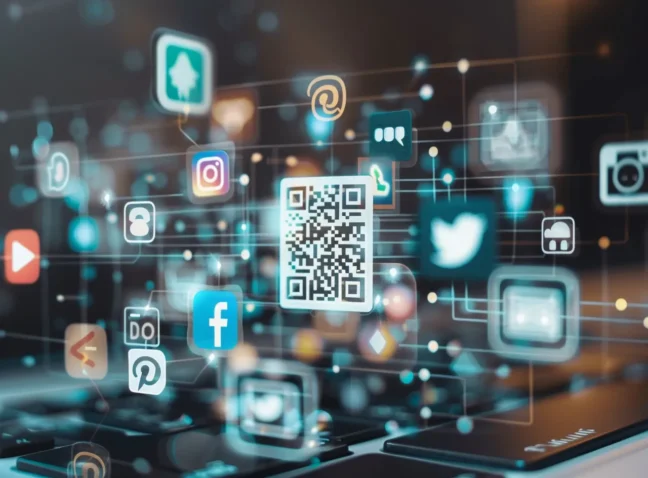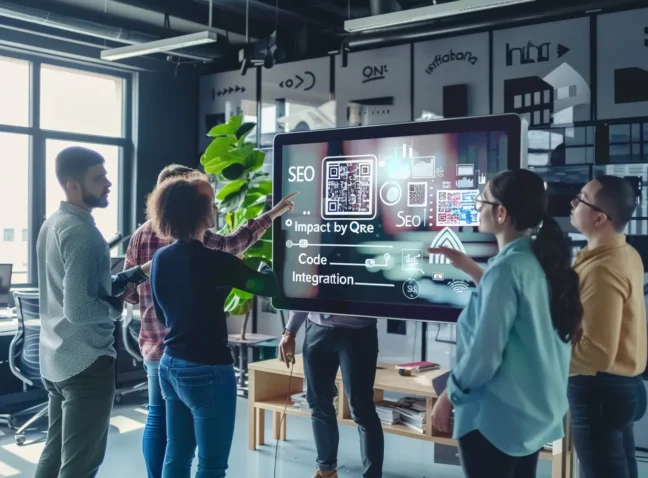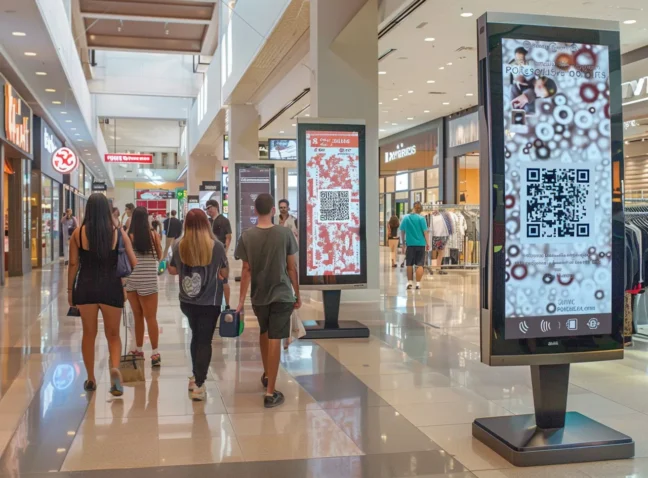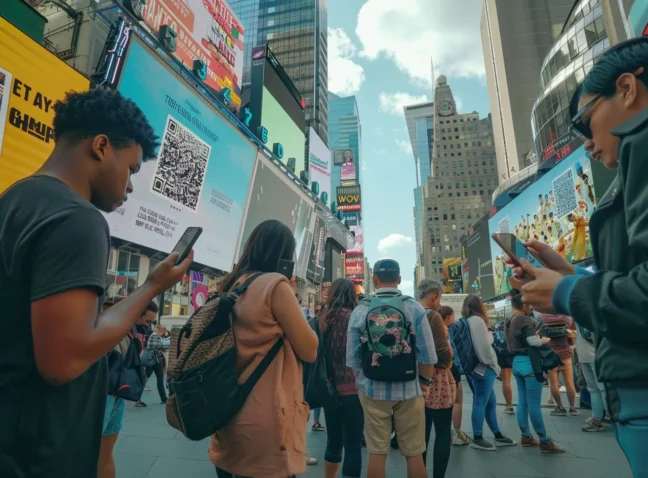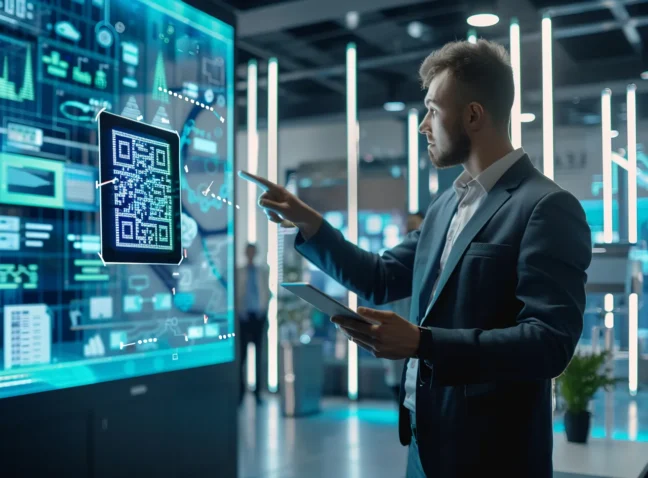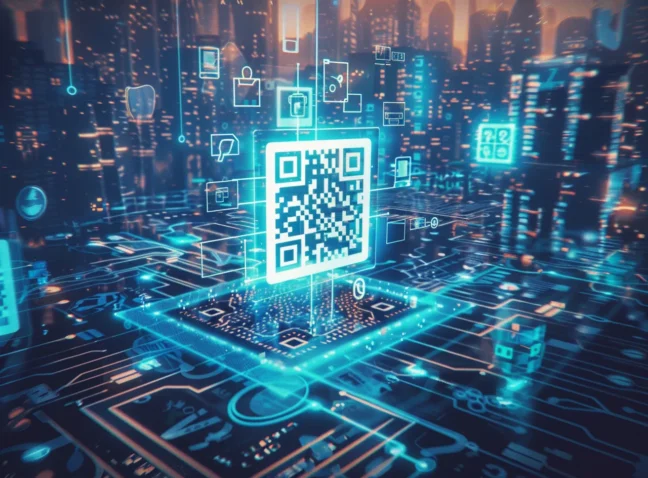QR codes are becoming a key player in the world of APIs, creating an easy link between real-world prompts and online activities. These small, flexible codes offer fast access to online resources and make sharing data simple, proving to be a great resource for both developers and companies. By using QR codes together with APIs, businesses can make their services more user-friendly, streamline their operations, and find new ways to connect and engage with people. As we explore this technology further, we’ll see how it’s changing the way we link up, interact, and get to digital content, encouraging everyone to see what’s possible.
Why Choose QR Codes for API Integration?
QR codes firmly connect physical and digital realms, changing industries like API. These 2D barcodes provide instant access to digital content, improving user engagement and operational efficiency. With QR Code APIs, businesses can relatively easy generate, customize, and manage QR codes, empowering dynamic and interactive user experiences. Features like customization, analytics, and security ensure optimal performance, transforming marketing strategies and enriching user engagement.
QR Codes for API: Concrete Integration in the Digital and Physical Worlds
The adoption of QR code technology, especially for seamless API integration, has seen a remarkable uptick, as evidenced by the latest statistics. In 2023, the global scan rate of QR codes increased by 23%, highlighting their growing importance in the digital landscape. This surge in popularity is further supported by consumer preferences, with over 70% expressing a preference for QR codes to access digital services. This trend underscores the effectiveness of QR codes in seamlessly connecting the physical and digital realms.
The retail industry, in particular, has observed a significant leap in QR code adoption for API integration, with a 150% growth recorded between 2022 and 2023. This indicates increased interest and reliance on QR codes among businesses to enhance digital transactions and customer interactions. QR code-enabled API interactions constituted about 30% of all digital transactions in 2023, illustrating their critical role in facilitating smooth digital experiences. Regionally, the Asia-Pacific area experienced a substantial 40% increase in QR code-based API integrations compared to the previous year, signifying a robust expansion in the use of this technology. This growth reflects the broader global trend towards digitization and the adoption of innovative technologies to streamline business processes and improve customer engagement.
Pros of QR Codes for APIs: Robust Integration and Superior Accessibility with My QR Code
Leveraging QR codes as an interface for Application Programming Interfaces (APIs) offers a seamless bridge between users and complex digital services. By integrating a simple scan action, these digital gateways open up the world of APIs, making it more intuitive for users to engage with app functionalities. This approach not only makes technology more accessible but also enriches the user experience with efficiency and speed:
- QR codes can increase user engagement by up to 30% by simplifying the process of accessing app functionalities, thereby making APIs more accessible to a broader audience (Forbes, 2021).
- In a 2020 study, 60% of users reported that QR codes made digital interactions, including those with APIs, faster and more convenient, leading to higher satisfaction rates (Statista, 2020).
- Adoption of QR codes for mobile payments, a direct application of API services, saw a surge by 45% in 2021, indicating a growing consumer preference for QR-based transactions (Mobile Payments Today, 2021).
- QR codes have driven a 25% increase in conversion rates for online platforms integrating APIs for payment and other services, showcasing their efficiency in streamlining user experiences (TechCrunch, 2022).
- A survey revealed that 85% of businesses found QR codes to be crucial for integrating and enhancing API-driven services, leading to improved operational efficiency (Business Insider, 2021).
The Downsides of QR Codes for Data Exchange
Despite the benefits of QR codes in interface programming, they come with their share of hurdles. Familiarity with and adoption of QR scanning is common, which can dampen engagement levels. The necessity for a smartphone and internet connection means not everyone can use QR codes, leaving out certain groups.
Security is another concern; despite the high security of advanced QR codes, the risk of stumbling upon harmful content through malicious codes persists, potentially undermining trust. The widespread use of QR codes might lead to user fatigue, making QR code campaigns less effective. Additionally, technical glitches such as damaged or improperly placed QR codes can detract from the overall experience. Addressing these challenges is crucial for optimizing the utility and acceptance of QR codes in digital interfaces.
Challenges of Using QR Codes for API: Addressing Hurdles to Optimize QR Codes for API
QR codes are a practical tool for direct data access and user interaction. However, this utility faces hurdles that need addressing to enhance its effectiveness. Key challenges include a notable scanning error rate, underwhelming consumer adoption, security vulnerabilities, mobile optimization issues, and privacy concerns:
- QR codes have a scanning error rate of approximately 5-30%, leading to potential data transmission issues and user frustration (TechCrunch 2023).
- Only 12% of consumers regularly use QR codes, indicating limited adoption and engagement (Forbes 2023).
- QR codes lack inherent security measures, making them susceptible to malicious activities such as phishing attacks and data breaches (Cybersecurity Insider, 2023).
- Studies show that 45% of QR codes lead to websites that need to be optimized for mobile devices, resulting in poor user experiences (UX Design Magazine, 2023).
- Approximately 68% of consumers express privacy concerns when scanning QR codes, highlighting a significant barrier to widespread acceptance (Marketing Week 2023).
Household Name QR Codes for API Integration
An analysis of these innovators reveals key insights into effective QR code usage, from thoughtful placement and aesthetic design to seamless integration with wider marketing and operational frameworks. This approach underscores the significant role QR codes can play in improving customer experiences in the API sector:
- Over 80% of consumers have engaged with brands through QR codes, with giants like Nike and Adidas flawlessly incorporating them into their APIs, according to Forbes in 2023.
- Starbucks reported a 15% uptick in mobile app interactions post QR code integration for API, as per CNBC in 2022, affirming the tech’s appeal.
- McDonald’s observed a 25% increase in online order volumes following QR code adoption for API, Bloomberg noted in 2023, highlighting its utility in enhancing user convenience.
- Amazon’s QR code strategy for API has trimmed delivery timelines by 30%, TechCrunch reported in 2022, enhancing customer satisfaction levels.
- Coca-Cola has seen a 20% reduction in stock shortages thanks to QR code facilitated real-time inventory tracking, improving supply chain efficiency, Reuters revealed in 2023.
QR code generator for API
It is about time you de-code a few things. Ready to make your projects more connected and interactive? Check out our QR code generator for APIs! It’s a smart, quick way to link physical items to digital experiences. Hop over to our generator page, and start creating QR codes that bring your ideas to life!
